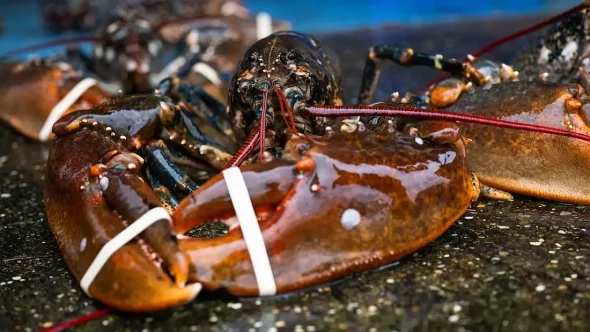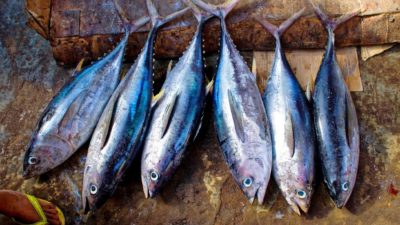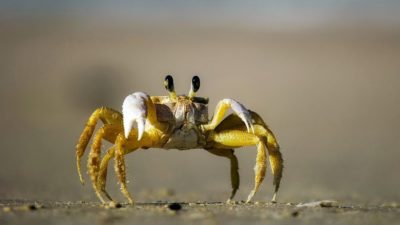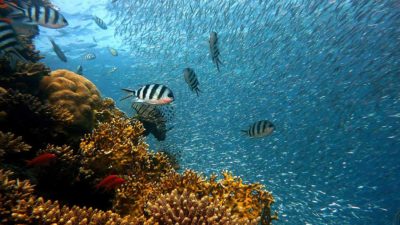Lobsters

- Lobsters, along with crabs and crayfish, are described as decapod (10-footed) crustaceans.
- Lobsters regenerate almost every part of their body, from their shell to their digestive tract, hundreds of times over their lifetime.1Koren, M., 2013. ‘Don’t Listen to the Buzz: Lobsters Aren’t Actually Immortal.’ Smithsonian Magazine, 3 June. Available at: https://www.smithsonianmag.com/science-nature/dont-listen-to-the-buzz-lobsters-arent-actually-immortal-88450872/ [Accessed 20 May 2020].
- Lobsters have a special enzyme called telomerase, which means they keep growing and become stronger and more fertile the older they get.2Derbyshire D. 2013. ‘Do lobsters hold the key to eternal life? Forget gastronomic indulgence, the crustacean can defy the ageing process.’ Daily Mail, 12 September. Available at: https://www.dailymail.co.uk/sciencetech/article-2418252/Do-lobsters-hold-key-eternal-life-Forget-gastronomic-indulgence-crustacean-defy-ageing-process.html [Accessed 20 May 2020]. This has led to the myth that they are immortal, but they don’t actually tend to reach more than an impressive 100 years of age.1Koren, M., 2013. ‘Don’t Listen to the Buzz: Lobsters Aren’t Actually Immortal.’ Smithsonian Magazine, 3 June. Available at: https://www.smithsonianmag.com/science-nature/dont-listen-to-the-buzz-lobsters-arent-actually-immortal-88450872/ [Accessed 20 May 2020].
- They keep regenerating and don’t age as we know it, but eventually, they get so big that the regeneration process takes too much energy and ends up killing them.1Koren, M., 2013. ‘Don’t Listen to the Buzz: Lobsters Aren’t Actually Immortal.’ Smithsonian Magazine, 3 June. Available at: https://www.smithsonianmag.com/science-nature/dont-listen-to-the-buzz-lobsters-arent-actually-immortal-88450872/ [Accessed 20 May 2020].
- Ancestors of lobsters predate even dinosaurs and evolved more than 500 million years ago.3Blue Planet Aquarium, 2018. ‘11 Living Creatures that Coexisted with Dinosaurs.’ Blue Planet Aquarium, 8 August. Available at: https://www.blueplanetaquarium.com/blog/fish-stories/11-living-creatures-that-coexisted-with-dinosaurs/ [Accessed 20 May 2020]. The modern lobsters we know today have been around for at least 140 million years.4Tshudy D, Donaldson S, Collom C et al. 2005. ‘Hoplopariaalbertaensis, a new species of clawed lobster (Nephropidae) from the Late Coniacean, shallow-marine Bad Heart Formation of northwestern Alberta, Canada.’ Journal of Paleontology 79 (5) 961-968.
- Like humans, lobsters tend to be either right-clawed or left-clawed.5History, 2011. ‘A Taste of Lobster History.’ History, 15 June. Available at: https://www.history.com/news/a-taste-of-lobster-history [Accessed 20 May 2020].
- Lobsters hear with their legs and taste with their feet!5History, 2011. ‘A Taste of Lobster History.’ History, 15 June. Available at: https://www.history.com/news/a-taste-of-lobster-history [Accessed 20 May 2020].
- Lobsters are exceptionally sensitive to touch, using hundreds of thousands of tiny hairs that protrude from gaps in their carapace (shell). They detect temperature changes of just one degree, which is partly why they migrate up to 160 km each year to find the best place for their fragile young after mating. This brings home the horror of boiling these sensitive creatures alive.
- The alpha male lobster mates with the most females in the area, partly because he has secured the best hidey-hole. Lobsters engage in a courtship dance before the female heads into the male’s cave for the next two weeks.6Altman, B., 2017. ‘Lobsters: A Love Story.’ Marine Science Today, 14 February. Available at: http://marinesciencetoday.com/2017/02/14/lobsters-a-love-story/ [Accessed 19 June 2020]. She’ll go on to produce 10,000 eggs.
Do lobsters feel pain?
Much like their false assumptions about fish, some people believe that crustaceans, such as lobsters and crabs, don’t feel pain. It’s a very convenient belief because it allows these animals to be boiled alive in seafood restaurants or delivered by post, alive and bound, for people to kill in their own homes – unthinkable for piglets, lambs, chickens and all other land animals for that matter.1Barnes, T., 2018. ‘Amazon offers live lobsters for delivery to customers through post.’ Independent, 4 February. Available at: https://www.independent.co.uk/news/uk/home-news/amazon-live-lobster-delivery-post-online-shop-buy-animals-cruelty-a8193591.html [Accessed 20 May 2020].
A large body of scientific evidence shows how aquatic invertebrates, including cephalopods and crustaceans, experience stress and can feel pain.2 Birch J, Burn C, Schnell A et al. 2021. Review of the evidence of sentience in cephalopod molluscs and decapod crustaceans. LSE Consulting. LSE Enterprise Ltd. The London School of Economics and Political Science. Available at: https://www.lse.ac.uk/News/News-Assets/PDFs/2021/Sentience-in-Cephalopod-Molluscs-and-Decapod-Crustaceans-Final-Report-November-2021.pdf [Accessed 28 June 2023]. Because of this, New Zealand, Norway, Switzerland and certain parts of Italy have banned the practice of boiling lobsters without first stunning them.3Wahltinez SJ, Stacy NI, Hadfield CA et al. 2022. Perspective: Opportunities for advancing aquatic invertebrate welfare. Frontiers in Veterinary Science. 9, 973376. [Accessed 28 June 2023].
Until recently in the UK, crustaceans weren’t even considered to be ‘animals’ and weren’t included in the Animal Welfare Act 2006, which only applied to vertebrates.4Animal Welfare Act 2006. Available at: https://www.legislation.gov.uk/ukpga/2006/45/section/1[Accessed 28 June 2023]. This opened the door wide to their mistreatment despite clear evidence that they do suffer. In response to pressure from animal welfare organisations, following the UK’s departure from the EU, a team of researchers was commissioned by the Government to investigate sentience in cephalopod molluscs and decapod crustaceans. They found strong and diverse evidence of sentience in both and said: “invertebrates should be treated in the same way as vertebrates” and called for an end to the boiling of lobsters, asphyxiating of octopuses and dismembering of crabs.5Schnell A, Crump A and Birch J. 2021. Octopus, crabs and lobsters feel pain – this is how we found out. The Conversation. Available at: https://theconversation.com/octopus-crabs-and-lobsters-feel-pain-this-is-how-we-found-out-173822 [Accessed 28 June 2023]. Their report, which reviewed over 300 scientific studies, led to the UK Government’s decision to legally recognise these animals as sentient beings.2 Birch J, Burn C, Schnell A et al. 2021. Review of the evidence of sentience in cephalopod molluscs and decapod crustaceans. LSE Consulting. LSE Enterprise Ltd. The London School of Economics and Political Science. Available at: https://www.lse.ac.uk/News/News-Assets/PDFs/2021/Sentience-in-Cephalopod-Molluscs-and-Decapod-Crustaceans-Final-Report-November-2021.pdf [Accessed 28 June 2023].
The Animal Welfare (Sentience) Act 2022 recognised animal sentience in UK law for the first time.6Animal Welfare (Sentience) Act 2022. Available at: https://www.legislation.gov.uk/ukpga/2022/22/enacted [Accessed 28 June 2023]. The legislation includes all vertebrates and cephalopods (such as octopuses, squid and cuttlefish) and some decapods (such as crabs, lobsters and crayfish). Campaigners hoped this may lead to greater protection for invertebrates – but it hasn’t stopped lobsters routinely being boiled alive in seafood restaurants.
Many applauded this law as if it was a new concept, but when the UK was part of the EU animals were legally recognised as sentient and it made little if any difference to how farmed animals were confined and killed. The new law may sound like good news, but the reality is when it comes to farmed animals, almost nothing is changing. The UK Government has been petitioned to ban boiling of lobsters but so far has not responded to either this nor the demand to end live postal deliveries of them. In fact, they say: “Existing industry practices will not be affected and there will be no direct impact on shellfish catching or in restaurant kitchens.”7Defra. 2021. Lobsters, octopus and crabs recognised as sentient beings. Available at: https://www.gov.uk/government/news/lobsters-octopus-and-crabs-recognised-as-sentient-beings [Accessed 28 June 2023].
How on Earth are we recognising the capacity to feel pain in these animals and at the same time allowing them to be boiled alive? How can we recognise sentience and then cold-heartedly kill them, and in such a brutal way? Often our compassion only extends to animals who look similar to us, such as primates, or ‘cute’ animals such as kittens and puppies. Crustaceans, fish and insects draw the short straw because they seem so different and this is probably why our laws disregard their well-being and ignore the scientific evidence. However, this just portrays a lack of imagination and understanding on our part. Of course, lobsters should be protected from cruelty by law and of course, boiling them alive should be relegated to the history books.
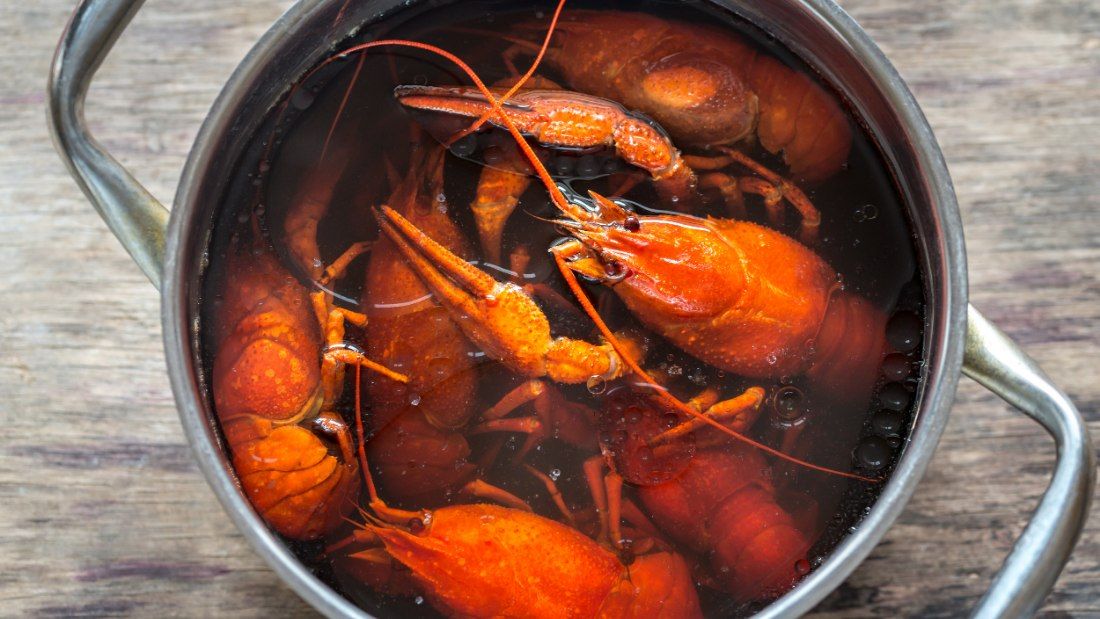
Lobsters are a family of 10-legged crustaceans who can be found in every ocean on the planet, from polar regions of the north to the balmy Caribbean. They make their home in the deep ocean or shallow coastlines dependent on the species and tend to favour caves, burrows, rocky terrain and cold waters.
Origin and history
Lobsters aren’t naturally red – that only happens when they’re boiled to death. Instead, they display a remarkable range of colours, from yellow, blue, black and, the rarest colour of all, white.
There are over 50 species of lobster and between them, they create a diverse rainbow of colours. But the ones people are most familiar with are Homarus Americanus and Homarus Gammarus, found in North America and Europe respectively. Not too long ago in the US, lobsters were seen as the ‘poor man’s food’ because they were so plentiful. While possibly prone to exaggeration, when Europeans first landed in North America it’s said that lobsters would wash ashore in piles. If it was ever true, the popularity of eating lobsters has brought an end to that but they are still seen only as food and not the sentient, fascinating creatures they really are.
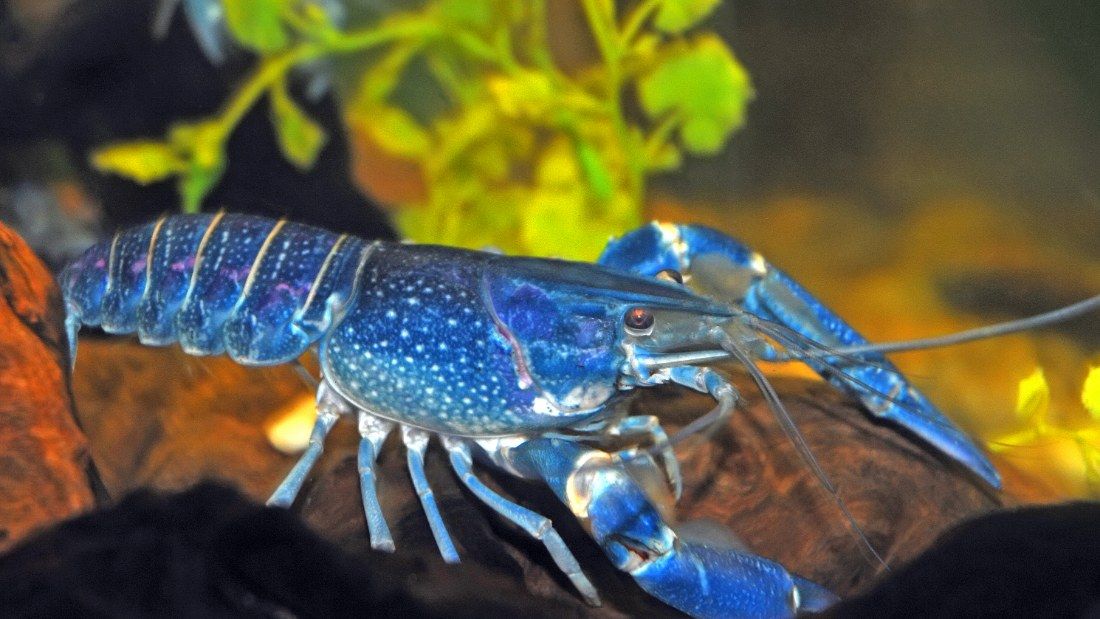
Where did they come from?
Lobsters themselves can be traced back to the Late Jurassic period, over 140 million years ago1Encyclopaedia Britannica. 2020. ‘Lobster.’ Encyclopaedia Britannica, 16 April. Available at: https://www.britannica.com/animal/lobster [Accessed 20 May 2020]. while their ancestors predate even the dinosaurs, having existed over 500 million years ago.2Blue Planet Aquarium. 2018. ‘11 Living Creatures that Coexisted with Dinosaurs.’ Blue Planet Aquarium, 8 August. Available at: https://www.blueplanetaquarium.com/blog/fish-stories/11-living-creatures-that-coexisted-with-dinosaurs/ [Accessed 20 May 2020].
Natural Diet
Lobsters are omnivores and eat vegetation and fish, using their incredibly strong claws to open up clams and mussels.1Encyclopaedia Britannica. 2020. ‘Lobster.’ Encyclopaedia Britannica, 16 April. Available at: https://www.britannica.com/animal/lobster [Accessed 20 May 2020]. While sometimes said to be cannibals, they are far more likely to behave like that in a captive environment when too many lobsters are crammed together in unnatural conditions.3McLure J. 2012. ‘Cruel New Fact of Crustacean Life: Lobster Cannibalism.’ Reuters. December 3. Available at: https://www.reuters.com/article/us-usa-lobster-idUSBRE8B21CH20121203 [Accessed 10 June 2020].
Lobsters have been documented eating smaller lobsters and the most likely reason is that overfishing has depleted their natural predators to such a degree that there is now a glut of lobsters producing an unnatural ecosystem and consequently causing cannibalism.3McLure J. 2012. ‘Cruel New Fact of Crustacean Life: Lobster Cannibalism.’ Reuters. December 3. Available at: https://www.reuters.com/article/us-usa-lobster-idUSBRE8B21CH20121203 [Accessed 10 June 2020].
Life Expectancy
Lobsters are considered ‘biologically immortal’ because they continually regenerate their body parts; they don’t get weaker, frailer or less fertile as the years go by like most animals. In fact, every time they moult they grow a shiny new shell and get bigger and stronger in old age, the opposite of how most animals age.4Koren M. 2013. ‘Don’t Listen to the Buzz: Lobsters Aren’t Actually Immortal.’ Smithsonian Magazine, 3 June. Available at: https://www.smithsonianmag.com/science-nature/dont-listen-to-the-buzz-lobsters-arent-actually-immortal-88450872/ [Accessed 20 May 2020]. This has led people to believe lobsters can live forever but it isn’t so, they just don’t age in the same way that we do. And this is how the idea has grown that without predators they could live forever.
The truth is that regenerating their whole body takes a lot of energy and because they don’t stop growing the process never ends but it takes more and more energy the bigger they get. In the end, possibly at 100 years old,1Encyclopaedia Britannica. 2020. ‘Lobster.’ Encyclopaedia Britannica, 16 April. Available at: https://www.britannica.com/animal/lobster [Accessed 20 May 2020]. it’s this that kills them.4Koren M. 2013. ‘Don’t Listen to the Buzz: Lobsters Aren’t Actually Immortal.’ Smithsonian Magazine, 3 June. Available at: https://www.smithsonianmag.com/science-nature/dont-listen-to-the-buzz-lobsters-arent-actually-immortal-88450872/ [Accessed 20 May 2020]. They are also incredibly vulnerable in between regenerations and without a shell to protect them can be picked off by predators.
Predators
Lobsters are found in almost every marine environment and so consequently, there is a wide range of predators, including codfish, dogfish and skate.1Encyclopaedia Britannica. 2020. ‘Lobster.’ Encyclopaedia Britannica, 16 April. Available at: https://www.britannica.com/animal/lobster [Accessed 20 May 2020]. The main predator is now, of course, humankind.
Wild lobsters and farmed lobsters
Aquaculture – the farming of freshwater and marine life – is becoming increasingly common and is similar to factory farms on land used to rear chickens, turkeys, pigs and other farmed animals. In 1990, about a fifth of all fish consumed came from aquaculture.5FAO. 2016. ‘The State of World Fisheries and Aquaculture 2016.’ Food and Agriculture Organisation of the United Nations. Available at: http://www.fao.org/3/a-i5555e.pdf [Accessed 30 April 2020]. In 2018, this share was 52 per cent, a figure that can be expected to continue to increase.6FAO. 2020. ‘The State of World Fisheries and Aquaculture 2020.’ Food and Agriculture Organization of the United Nations. Available at: https://www.fao.org/state-of-fisheries-aquaculture/2020/en [Accessed 27 June 2023].
Lobsters have not suffered from generations of unnatural selective breeding in the way that land animals like chickens have. In the first few weeks of life, juvenile lobsters are cannibalistic, thus proving difficult to farm, and they have one of the most complicated larvae stages of any animal, meaning farming them from eggs is costly and difficult to achieve. But the attempts continue and there is a possibility that lobster farming could soon become commercialised.7The National Lobster Hatchery. 2014. ‘Could lobster farming become a new industry for Coastal areas?’ The National Lobster Hatchery, 10 July. Available at: https://www.nationallobsterhatchery.co.uk/could-lobster-farming-become-a-new-industry-for-coastal-areas/ [Accessed 20 May 2020]. Producers seem to have learnt nothing from salmon farming which has physically changed the fish, is riddled with diseases and has helped to create antibiotic-resistant bacteria. Environmentally it is disastrous.
The lobster industry
Lobsters have little legislation to protect them in the UK – they were not even classed as an animal in the Animal Welfare Act 2006.1Animal Welfare Act 2006. Available at: https://www.legislation.gov.uk/ukpga/2006/45/section/1 [Accessed 30 April 2020]. Thanks to the misplaced view that they can’t feel pain, lobsters are exposed to severe cruelty in how they are captured, trapped and killed. Although the law has changed (see above) their lack of protection has not.
Size of the lobster industry
Approximately 3,000 tonnes of European lobsters are captured every year in the UK at a value of £44 million.2Marine Management Organisation. 2019. ‘UK Sea Fisheries Statistics 2018.’ National Statistics. Available at: https://assets.publishing.service.gov.uk/government/uploads/system/uploads/attachment_data/file/863732/UK_sea_fisheries_statistics_2018.pdf [Accessed 10 June 2020].
In addition, Nephrops (Nephrops norvegicus), otherwise known as Norwegian lobsters, Dublin Bay prawn, langoustine or scampi, total a much higher 25 – 30,000 tonnes each year.3Food and Agriculture Organization of the United Nations, 2020 (a). ‘Nephrops norvegicus.’ FAO. Available at: http://www.fao.org/fishery/species/2647/en [Accessed 19 June 2020]. The UK exports most Norwegian lobsters to Mediterranean countries like Spain to the value of £80 million annually.4Department of Environment, Food and Rural Affairs. 2016. ‘£360 million of UK seafood making a splash on European menus.’ Defra. 27 April. Available at: https://www.gov.uk/government/news/360-million-of-uk-seafood-making-a-splash-on-european-menus [Accessed 19 June 2020].
The total capture of sea animals comes to 730,000 tonnes each year in the UK.2Marine Management Organisation, 2019. ‘UK Sea Fisheries Statistics 2018.’ National Statistics. Available at: https://assets.publishing.service.gov.uk/government/uploads/system/uploads/attachment_data/file/863732/UK_sea_fisheries_statistics_2018.pdf[Accessed 10 June 2020]. The number of sea animals killed is so vast that they aren’t even counted individually but only in terms of their tonnage.
In 1980, the global catch of lobsters totalled 110,000 tonnes.5Food and Agriculture Organisation of the United Nations. 2017. ‘The World Lobster Market.’ FAO. January. Vol. 123. Available at http://www.fao.org/3/a-i6816e.pdf [Accessed 19 June 2020]. The industry has been growing exponentially since then and it’s predicted to hit 400,000 tonnes annually by 2025, a fourfold increase in less than five decades.6Research and Markets, 2019. ‘Global Lobster Market, by Species, Importing and Exporting Countries Forecast.’ Research and Markets. September. Available at: https://www.researchandmarkets.com/reports/4833063/global-lobster-market-by-species-importing-and [Accessed 19 June 2020]. Canada and the US have the biggest lobster export industries, totaling almost 85 per cent of all exports while the UK accounts for four per cent of total exports.
Most lobsters are alive when transported, packed into boxes and flown overseas. Lobsters can die during transportation from asphyxiation if there isn’t enough oxygen in the containers, a horrific way of dying.7Jacklin M and Combes J. 2007. ‘The good practice guide to handling and storing live Crustacea.’ Sea Fish Industry Authority Publication. Available at: https://www.seafish.org/media/Publications/CrustaceaGPG_0505.pdf [Accessed 21 May 2020]. If exposed to freshwater – which can easily happen when they’re forced into iceboxes – they can drown. As the world’s demand for lobster increases, more live lobsters will be flown around the world, crammed into crates and suffer inhumane conditions, all before being boiled alive or hacked to pieces when they reach their final destination.
Capture
Lobster pots
Lobster pots, also known as lobster traps, are baited with dead fish such as herring inside the cage and then deposited on the seabed. Lobsters enter through an opening but are then unable to escape and it may be hours or days before the pots are collected. This method of capture is used for the two most familiar types of lobsters, the American and the European lobster, which have big claws and large bodies.
Once captured and hauled up to the boats they are placed in holding containers. In the process, they may lose their fragile legs or suffer other injuries. Elastic bands are wrapped around their main claws to keep them permanently closed. There is not even a façade of welfare to protect them. Mind you, farmed land animals also have little in the way of legal protection and we know from our undercover investigations that even the few that exist are routinely ignored.
Trawlers
The Norwegian lobsters are much smaller and slimmer than other types of lobster and orange in colour, measuring up to 24cm in length.3Food and Agriculture Organisation of the United Nations. 2020 (a). ‘Nephrops norvegicus.’ FAO. Available at http://www.fao.org/fishery/species/2647/en [Accessed 19 June 2020]. They are usually associated with Mediterranean holidays, though the species can be found all the way from Norway down to Portugal and is not actually widespread in the Mediterranean.
The Norwegian lobster is the most exploited of all invertebrates in EU waters, with an average annual value of just over £400 million.8Leocàdio A, Whitmarsh D and Castro M. 2012. ‘Comparing Trawl and Creel Fishing for Norway Lobster (Nephrops norvegicus): Biological and Economic Considerations. PLoS ONE 7 (7) e39567. Available at: https://journals.plos.org/plosone/article?id=10.1371/journal.pone.0039567 [Accessed 19 June 2020]. The main fishing ground is the Northeastern Atlantic, particularly the Irish and North Sea, where they live in burrows in the sand, popping out at night to feed – and that’s when they are caught by trawlers, with big nets that drag across the ocean floor and scoop up everything in its path. Approximately 60,000 tonnes of Norwegian Lobster are caught each year, with about half of that coming from the UK and a further 8,000 tonnes from Ireland.3Food and Agriculture Organisation of the United Nations. 2020 (a). ‘Nephrops norvegicus.’ FAO. Available at: http://www.fao.org/fishery/species/2647/en [Accessed 19 June 2020].
This type of trawling, of course, is one of the most destructive forms of fishing ever devised because of the damage it does to the seabed and other sea life. About 16 per cent of Norwegian lobsters are dead by the time the nets are hauled out along with plenty of ‘bycatch’ – animals who aren’t edible or popular for human consumption and may well be endangered.8Leocàdio A, Whitmarsh D and Castro M. 2012. ‘Comparing Trawl and Creel Fishing for Norway Lobster (Nephrops norvegicus): Biological and Economic Considerations. PLoS ONE 7 (7) e39567. Available at: https://journals.plos.org/plosone/article?id=10.1371/journal.pone.0039567 [Accessed 19 June 2020]. Bycatch is usually thrown back into the ocean with most of the creatures dead, dying or injured and can include turtles and dolphins.
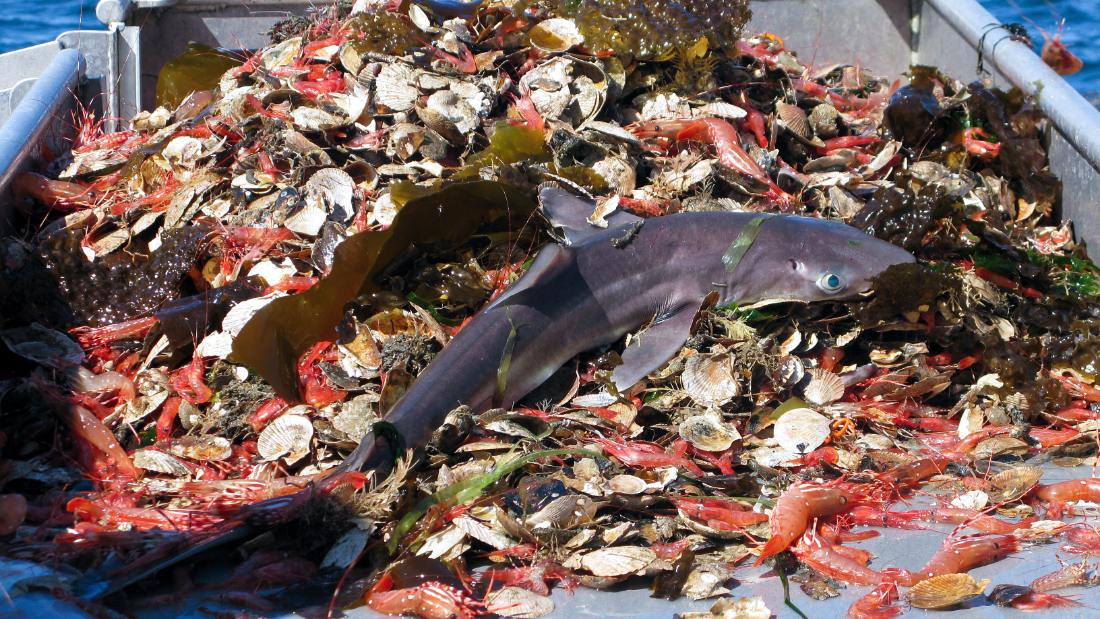
Another method of catching Norwegian lobsters is by using creels – like a lobster cage, these traps are laid on ocean floors with bait. The lobster goes inside for the food and is unable to escape; hours or days later, they are pulled up out of the ocean to be killed. Creel catching accounts for less than a quarter of the total tonnage of Norwegian lobsters caught in UK waters each year but is more profitable per lobster caught.8Leocàdio A, Whitmarsh D and Castro M. 2012. ‘Comparing Trawl and Creel Fishing for Norway Lobster (Nephrops norvegicus): Biological and Economic Considerations. PLoS ONE 7 (7) e39567. Available at https://journals.plos.org/plosone/article?id=10.1371/journal.pone.0039567 [Accessed 19 June 2020]. Creel fishing brings in more revenue because it saves on fuel and labour costs and it looks like creel fishing is set to grow in use over trawling.8Leocàdio A, Whitmarsh D and Castro M., 2012. ‘Comparing Trawl and Creel Fishing for Norway Lobster (Nephrops norvegicus): Biological and Economic Considerations. PLoS ONE 7 (7) e39567. Available at: https://journals.plos.org/plosone/article?id=10.1371/journal.pone.0039567 [Accessed 19 June 2020].
Maine
The most famous of lobsters is the Maine Lobster and it’s for a sad reason; rather than as sentient, fascinating creatures who just want to live their lives naturally, they’re known only as a popular food in the Maine lobster industry that accounts for one billion dollars in state revenue.9Gershenson G. 2020. ‘“I’m not a quitter”: lobstermen turn to kelp farming in the face of climate crisis.’ The Guardian, 19 May. Available at: https://www.theguardian.com/environment/2020/may/19/im-not-a-quitter-lobstermen-turn-to-kelp-farming-in-the-face-of-global-crises [Accessed 19 June 2020].
The Maine lobster industry boasts that it is a sustainable fishery, pointing to the fact that lobster populations remain high after decades of capturing lobsters. In fact, lobster catches are on the increase. In the last decade, an average of about 250,000,000 pounds of lobsters have been landed every single year, a staggering number which is about 30,000,000 more pounds than it used to be in the sixties.10Maine Government, 2020. ‘Maine Commercial Landings.’ Maine.gov. 20 February.Available at: https://www.maine.gov/dmr/commercial-fishing/landings/documents/AnnualLandingsValue.table.pdf [Accessed 19 June 2020]. There are regulations that keep lobster populations high; in Maine, lobster catchers are not allowed to take egg-bearing females and lobsters must not be too big (because the biggest lobsters are the most fertile) or too small (because that means they haven’t mated yet). They’re thrown back into the oceans if they fall into either category or thrown into crates on the boat if they’re the ‘right size’ for eating, with a body between three and a quarter inches to five inches long.11Maine Department of Marine Resources. 2009. ‘A Guide to Lobstering in Maine – July 2009’. Maine Department of Marine Resources. July. Available at: https://www.maine.gov/dmr/science-research/species/lobster/guide/index.html [Accessed 19 June 2020]. Maine also practices seeding, using hatcheries that pump thousands of juveniles into the ocean so that humans can keep on eating vast quantities of lobsters every year.12Amelinckx A., 2017. ‘Rock Lobster From a Farm Could Soon Be Coming To a Menu Near You.’ Smithsonian Magazine. 28 September. Available at https://www.smithsonianmag.com/innovation/rock-lobster-farm-could-soon-be-coming-menu-near-you-180965064/ [Accessed 19 June 2020]. This goes some way towards explaining the increase in lobster catches almost every year in the last decade.
But the two main reasons for the unnaturally high lobster populations are that humans have overfished to the extent that we’ve wiped out most of the natural predators of lobsters, and because the Gulf of Maine is heating up faster than 99 per cent of the world’s oceans.9Gershenson G. 2020. ‘“I’m not a quitter”: lobstermen turn to kelp farming in the face of climate crisis.’ The Guardian, 19 May. Available at: https://www.theguardian.com/environment/2020/may/19/im-not-a-quitter-lobstermen-turn-to-kelp-farming-in-the-face-of-global-crises [Accessed 19 June 2020]. These warmer temperatures mean that lobster populations are exploding. However, once the temperatures get too warm parasites and diseases spread. Warming waters wiped out a once-booming lobster population in Rhode Island and the Long Island Sound because of lobster shell disease, and the lobsters in Maine and all along the coast up to Canada face the same threat.9Gershenson G. 2020. ‘“I’m not a quitter”: lobstermen turn to kelp farming in the face of climate crisis.’ The Guardian, 19 May. Available at: https://www.theguardian.com/environment/2020/may/19/im-not-a-quitter-lobstermen-turn-to-kelp-farming-in-the-face-of-global-crises [Accessed 19 June 2020]. Humans are interfering in such a way that, far from helping lobsters out along the North American coast in a ‘sustainable’ fishery, we’re looking at potentially wiping the species out in the near future.
The lobster industry cannot claim that it’s sustainable just by pointing to lobster numbers and nothing else. Because of the unnatural influx of lobsters through wiping out its natural predators, climate change and hatcheries, lobsters are resorting to cannibalism more often – they’re one of the few animals left on the coasts around Maine and they need to eat, so they turn on each other. In the words of a Maine lobsterman, ‘The Maine coast is almost all lobster now.’9Gershenson G. 2020. ‘“I’m not a quitter”: lobstermen turn to kelp farming in the face of climate crisis.’ The Guardian, 19 May. Available at: https://www.theguardian.com/environment/2020/may/19/im-not-a-quitter-lobstermen-turn-to-kelp-farming-in-the-face-of-global-crises [Accessed 19 June 2020]. That’s not sustainable in any form for an ocean ecosystem.
Another problem is that the bait typically used for lobster cages is herring. Now lobstermen complain that they’re running out of bait to use because herring supplies are so low.13Talbot R. 2019. ‘Maine is running out of lobster bait. Is salmon the answer?’ National Geographic. 1 May. Available at: https://www.nationalgeographic.com/animals/2019/04/salmon-farms-source-bait-maine-lobsters/ [Accessed 19 June 2020]. This should hardly be a surprise to them given that the 6,000 commercial lobstermen in Maine use some three million lobster pots, most laden with herring bait, every year.14Lobster Anywhere. ‘Fill Your Trap With Lobster from Maine: All About Lobster Traps.’ Lobster Anywhere. Available at: https://lobsteranywhere.com/seafood-savvy/trap-lobster-from-maine/[Accessed 19 June 2020].
Amazingly, some lobstermen are looking at using factory-farmed salmon remains as replacement bait in their lobster cages.13Talbot R. 2019. ‘Maine is running out of lobster bait. Is salmon the answer?’ National Geographic. 1 May. Available at: https://www.nationalgeographic.com/animals/2019/04/salmon-farms-source-bait-maine-lobsters/ [Accessed 19 June 2020]. Rather than recognise the severe damage caused by using herring bait and realise that lobster operations must be restricted, the lobster industry may well fund an incredibly carbon-intensive industry that causes havoc in ocean ecosystems through the transmission of diseases and parasites.13Talbot R. 2019. ‘Maine is running out of lobster bait. Is salmon the answer?’ National Geographic. 1 May. Available at: https://www.nationalgeographic.com/animals/2019/04/salmon-farms-source-bait-maine-lobsters/ [Accessed 19 June 2020]. When there’s a salmon shortage, lobstermen will just look to the next animal to exploit, and the destructive pursuit for lobster flesh will continue.
Aquaculture
The global aquaculture industry has long been hungry to extend its reach to lobsters, and decades of research, time and money have been poured into working out ways to profit off the flesh of farmed lobsters.15Food and Agriculture Organisation of the United Nations. 2020 (b). ‘Panulirus Homarus.’ FAO. Available at: http://www.fao.org/fishery/culturedspecies/Panulirus_homarus/en#tcNA0078 [Accessed 19 June 2020]. Lobster farming, so far, has been far less profitable than capturing live lobsters because of the costs involved in rearing the lobsters, who grow very slowly and can take up to seven years to grow to a profitable weight before they’re sold.16Daniels C, Wills B, Ruiz-Perez M et al. 2015. ‘Development of sea-based container culture for rearing European lobster (Homarus gammarus) around South West England.’ Aquaculture. 1 November. Vol. (448) 186-195. Available at: https://www.sciencedirect.com/science/article/abs/pii/S004484861530020X [Accessed 19 June 2020]. After decades of failure to make a profit, lobster aquaculture is still in its early stages of development and no commercial farms exist that rear lobsters from eggs to slaughter age. Unfortunately, this looks like it’s going to change soon.
There are four hatcheries in the UK, based in Orkney, North Wales, Cornwall and the Shetlands.17Boothroyd D. 2007. ‘The Fishery’. National Lobster Hatchery. Available at: https://www.nationallobsterhatchery.co.uk/whats-it-all-about/education/the-fishery/ [Accessed 19 June 2020]. Lobster larvae live through their early life stages in individual cells in these on-land hatcheries because when they are very young they are cannibalistic. Once they reach a certain weight and are less likely to be eaten by predators in the ocean, at about five weeks of age, they are released into the ocean, a method known as seeding. From 1995 through to 2007, these hatcheries have put 355,000 juvenile lobsters into the ocean.17Boothroyd D. 2007. ‘The Fishery’. National Lobster Hatchery. Available at: https://www.nationallobsterhatchery.co.uk/whats-it-all-about/education/the-fishery/ [Accessed 19 June 2020].
The idea is that these hatcheries can address the plummeting number of lobster stocks around the UK thanks to humans eating them at such unsustainable levels. An obvious issue with raising lobsters in unnatural on-land systems in their key development stage is that they don’t have any behavioral enrichment. They don’t learn which animals to avoid or what to eat before they’re churned out into the open sea. Partly for this reason and partly because on-land hatcheries are expensive, sea-based versions are currently in the process of being developed.16Daniels C, Wills B, Ruiz-Perez M et al. 2015. ‘Development of sea-based container culture for rearing European lobster (Homarus gammarus) around South West England.’ Aquaculture. 1 November. Vol. (448), 186-195. Available at: https://www.sciencedirect.com/science/article/abs/pii/S004484861530020X [Accessed 19 June 2020]. Again, we’ll have to wait and see what kind of impact this interference has on our world’s oceans if these containers become widespread. Of course, stopping eating lobsters would do the same job in a far better, more natural way without costing us anything.
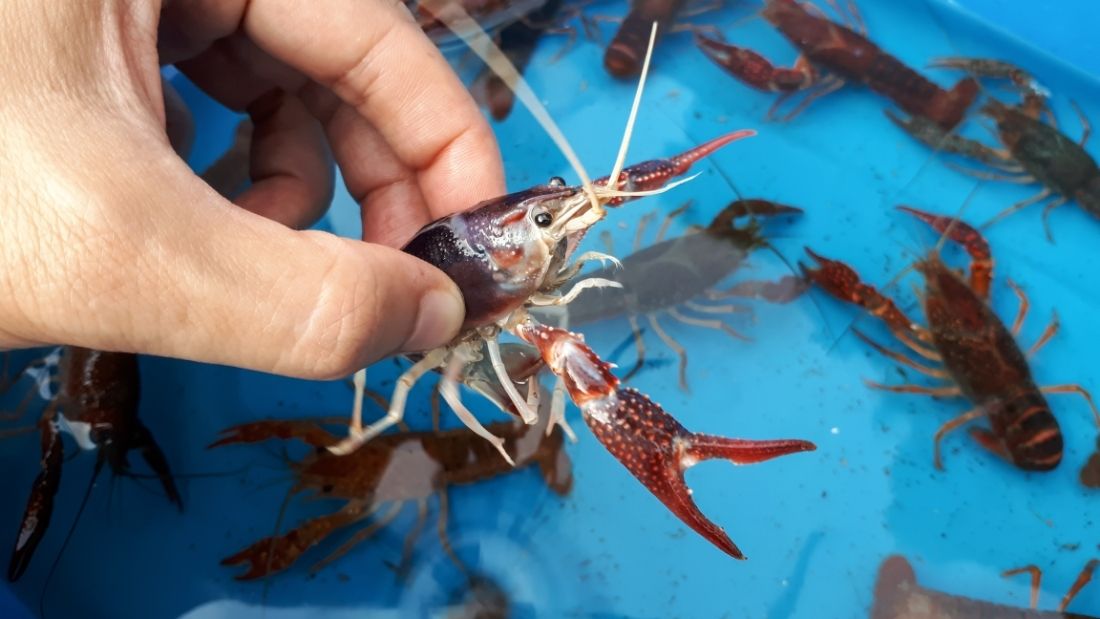
Further afield, in Vietnam, spiny lobster farming in sea cages has become a $100 million industry, where wild juvenile lobsters are captured and kept in cages to grow in size for human consumption without the possibility of natural predators eating them.18Discover Nhatrang. 2016. ‘Lobster Farming – From Ocean to Plate.’ Discover Nhatrang. 26 July. Available at: https://discover-nhatrang.com/featured/lobster-farming-from-ocean-to-plate.html [Accessed 19 June 2020]. Lobster farming currently relies on a natural supply of wild young lobsters to trap and Vietnam has only been successful because of the high supply of wild spiny lobster seed.15Food and Agriculture Organisation of the United Nations, 2020 (b). ‘Panulirus Homarus.’ FAO. Available at: http://www.fao.org/fishery/culturedspecies/Panulirus_homarus/en#tcNA0078 [Accessed 19 June 2020]. The only other developed fishery for spiny lobster is in Indonesia, where about 500,000 youngsters are caught each year.15Food and Agriculture Organisation of the United Nations. 2020 (b). ‘Panulirus Homarus.’ FAO. Available at: http://www.fao.org/fishery/culturedspecies/Panulirus_homarus/en#tcNA0078 [Accessed 19 June 2020]. They will spend up to two years in these cages, unable to express their natural desires, until they’re hauled out of the ocean to be boiled alive.
Commercial farms, where lobsters are kept in captivity from egg to slaughter, don’t exist – yet. There have been plans to launch commercial lobster fisheries. In 2012, for example, Darden Restaurants set its sights on setting up a lobster farm.19SeafoodSource. 2012. ‘Darden invests in first integrated lobster park.’ SeafoodSource. 5 November. Available at: https://www.seafoodsource.com/news/aquaculture/darden-invests-in-first-integrated-lobster-park [Accessed 19 June 2020]. By 2029, Darden Aquafarm hoped to produce 40 million pounds of lobster every year with forecasted revenue to the tune of billions of dollars. They planned to pour $300 million into this venture. 20Huffington Post. 2012. ‘Darden Aquafarm, World’s First Commercial Lobster Farm, To Grow Billions Worth of Shellfish.’ Huffington Post. 9 April. Available at https://www.huffpost.com/entry/darden-aquafarm_n_1412352 [Accessed 19 June 2020]. However, to date, most lobsters for human consumption remain wild-caught as it is too expensive to raise farmed lobster as they take such a long time to reach market size, plus they have a tendency to attack and even eat each other in confined spaces! It seems likely that others will try though and like the grotesquely overgrown chickens of modern factory farming, who knows what factory-farmed lobsters would end up looking like?
Lobsters are transported all over the UK alive. The conditions are appalling – usually packed with ice, which if improperly used can freeze the lobsters to death.7Jacklin M and Combes. J., 2007. ‘The good practice guide to handling and storing live Crustacea.’ Sea Fish Industry Authority Publication. Available at: https://www.seafish.org/media/Publications/CrustaceaGPG_0505.pdf [Accessed 21 May 2020]. Their claws are bound so they can be crammed together with other lobsters without fighting but being solitary territorial animals, it is highly stressful and this may last for days before they are killed. When people order them online, they are delivered by post, stuffed between cardboard and thrown about in post offices and postal vans, and once they arrive at people’s homes, they can be left bound and unable to move for many hours in a refrigerator.
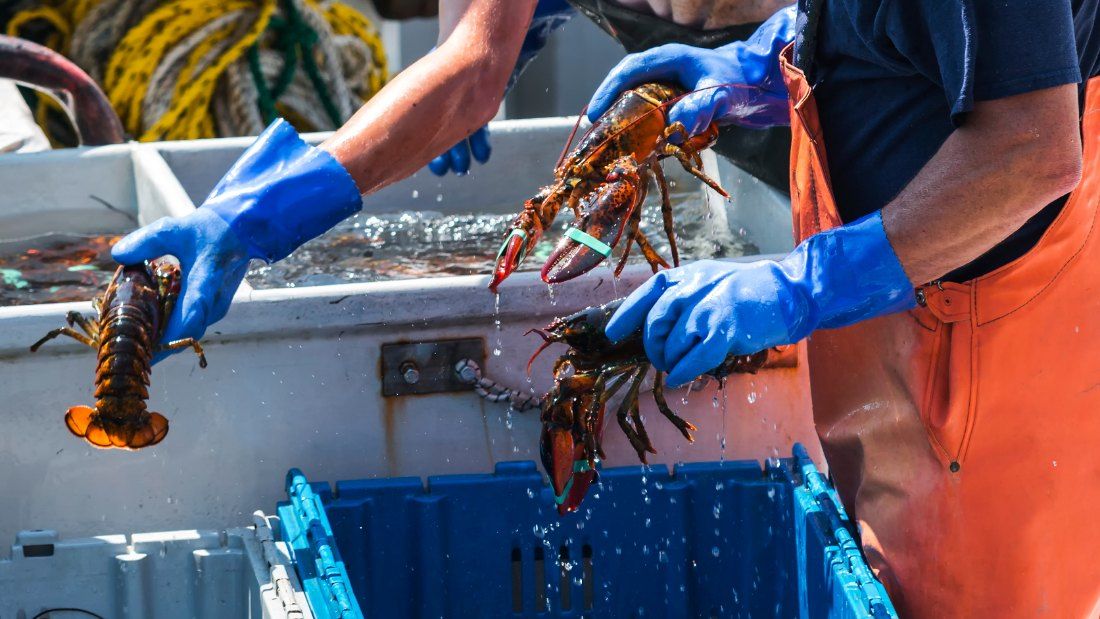
If their captive lives have been appalling so far, the way they are killed is even worse.
People can buy live lobsters either directly from shops or through the post to kill at home. Many people see boiling lobsters alive as the best way to kill them but the truth is, there is no easy way to kill a lobster because they have 13 nerve centres. All of them need to be disabled to kill the lobster and people therefore go for the less messy method, pushing them into boiling water. Lobsters feel pain and it is undeniably brutal to boil them to death.1CBC. 2018. ‘Lobsters ‘very likely’ feel pain when boiled alive, researcher says.’ CBC, 16 January. Available at https://www.cbc.ca/news/canada/prince-edward-island/pei-lobster-feelings-1.4489691 [Accessed 20 May 2020]. It takes three minutes before the boiling water kills them.2Ellicott, C., 2009. ‘How to Kill a Lobster with Kindness.’ Daily Mail. 23 November. Available at: https://www.dailymail.co.uk/femail/food/article-1230020/How-kill-lobster-kindness.html [Accessed 23 June 2020].
The evident agony of a lobster being boiled alive is described in the book Consider the Lobster:
“However stuporous the lobster is from the trip home, for instance, it tends to come alarmingly to life when placed in boiling water. If you’re tilting it from a container into the steaming kettle, the lobster will sometimes try to cling to the container’s sides or even to hook its claws over the kettle’s rim like a person trying to keep from going over the edge of a roof. And worse is when the lobster’s fully immersed. Even if you cover the kettle and turn away, you can usually hear the cover rattling and clanking as the lobster tries to push it off. Or the creature’s claws scraping the sides of the kettle as it thrashes around. The lobster, in other words, behaves very much as you or I would behave if we were plunged into boiling water (with the obvious exception of screaming). A blunter way to say this is that the lobster acts as if it’s in terrible pain, causing some cooks to leave the kitchen altogether and to take one of those little lightweight plastic oven timers with them into another room and wait until the whole process is over.”3Wallace DF. 2006. ‘Consider the Lobster.’ London: Hachette Digital.
One of the supposedly recommended humane ways to kill lobsters is to place them in a freezer or in crushed ice until they become insensible before slaughtering them.4Jacklin M and Combes J. 2007. ‘The good practice guide to handling and storing live Crustacea.’ Sea Fish Industry Authority Publication. Available at: https://www.seafish.org/media/Publications/CrustaceaGPG_0505.pdf [Accessed 21 May 2020]. However, this freezing process takes 30-40 minutes before the animal is rendered unconscious, during which time he or she will suffer greatly.5Roth B and Øines S. 2010. ‘Stunning and killing of edible crabs (Cancer pagurus).’ Universities Federation for Animal Welfare. Animal Welfare, 19 (3), August, 287-294 [Accessed 1 May 2020].
A supposedly humane way of killing a lobster is by cutting into the head first and then using a knife to slice along the body of the lobster where the rest of the nerve centres lie. As anyone can buy and kill lobsters, no matter how experienced they are, the chances of getting this process wrong are high, and the consequences are unimaginable suffering for the lobster who is hacked into, but not dead.
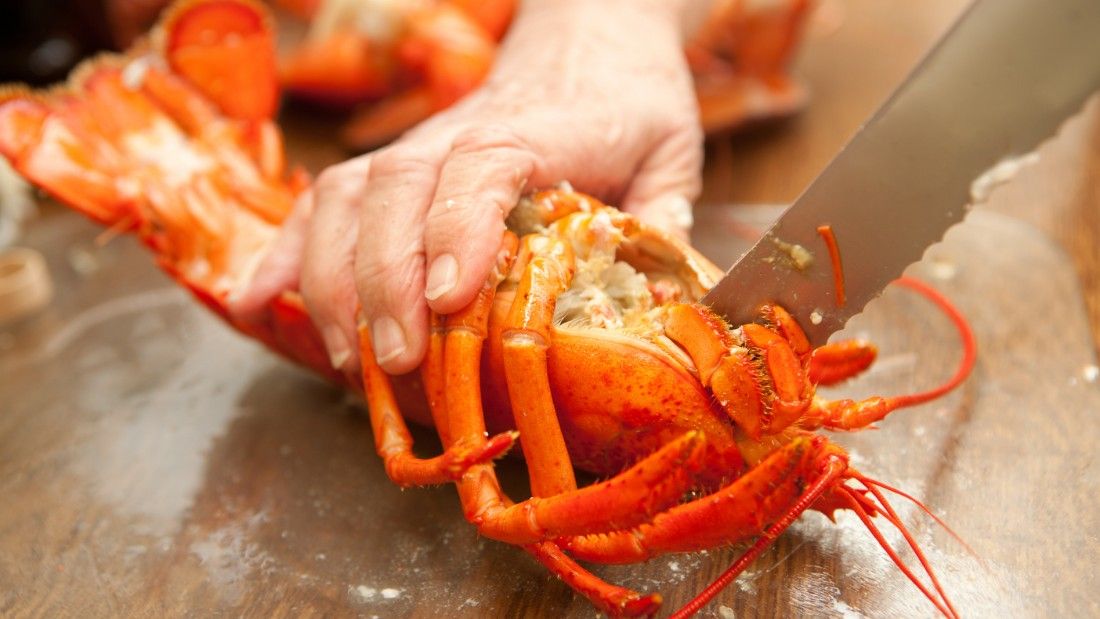
Another way of killing lobsters is to stun them in electric baths before being boiled. This specialist piece of equipment is only used commercially, in some restaurants and wholesalers selling ready-killed lobsters. Another device, the CrustaStun, has been touted as a humane way of killing lobsters. You put the lobster in a box the size of a microwave and an electric charge renders the crustacean unconscious in less than a second and kills the animal within ten seconds. Retailing at about £3,000, it’s unsurprising that a lot of restaurants continue to boil lobsters instead, and it’s hardly something that many people at home are going to buy for lobsters delivered to their door. It doesn’t address the severe welfare issues in trapping and caging lobsters up until their death either. The most humane action is simply to leave the lobsters in the sea.
As stated, some regions and countries have banned the practice of boiling lobsters alive without pre-stunning, such as Switzerland and New Zealand, on the grounds that it causes unjustifiable cruelty.6Saner E. 2018. ‘Is it wrong to boil lobsters alive?’ The Guardian. 11 February. Available at: https://www.theguardian.com/world/2018/feb/11/is-it-wrong-to-boil-lobsters-alive [Accessed 20 May 2020]. Unfortunately, that is not the case in the UK.
While we may not understand lobsters in the same way as we do cats and dogs, there is no doubt that taking the life of an animal that does not want to die is completely unacceptable and the unscientific claim that they don’t suffer no longer holds water.





